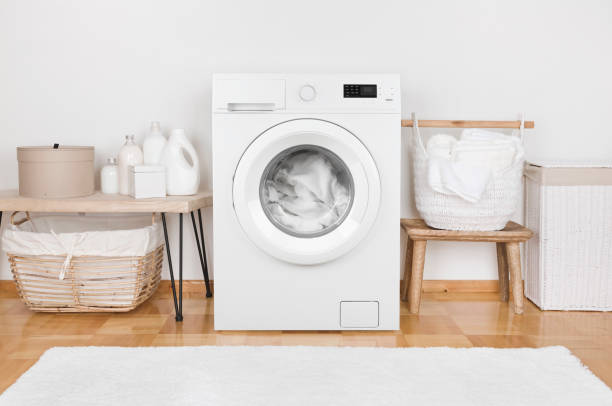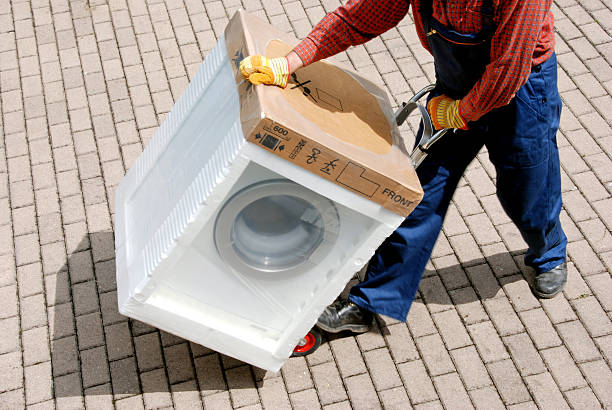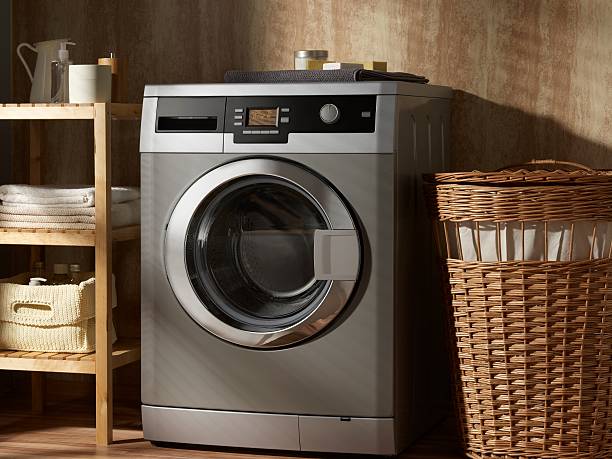How much does a washing machine weigh? Depending on the make and model of your washing machine, this can be a challenging question.
A large-capacity washing machine typically weighs around 230 pounds. The weight of a medium-sized washer, however, can range from 150 to 180 pounds. That weight obviously changes as you add more laundry to the washer.
Additionally, you must be aware of the safest way to move the large machine and whether additional assistance is required. The weight of a washing machine is what we’re talking about today.
Table of Contents
Average Washing Machine Weight
Around 150 pounds is the weight of a typical mid-sized top-loading washer. The average weight of a mid-size front loader is between 200 and 250 pounds.
How Much Does a Washing Machine Weigh?
Small washing machines can weigh as little as 99 pounds, while extra-large machines can weigh as much as 300 pounds. The size, capacity, and type of the washing machine all affect how much it weighs, which explains why.
A front-loading washer also tends to weigh more than a top-loading washer. Because it uses less water, more weight, or a counterweight, is required. In this manner, your washing machine will have adequate stability and movement control to prevent dancing across your laundry room floor.
The weight of washing machines does, however, differ between various brands and models. A Maytag high-efficiency top load washing machine with 4.7 cu ft of capacity weighs approximately 159 pounds, whereas an LG high-efficiency front load washer with just 2.3 cu ft of capacity could only weigh 148 pounds.
The 5.8 cu ft high-efficiency Samsung Flexwash front-load washing machine weighs about 239 pounds. Although it has a capacity of 4.3 cu ft, a Whirlpool high-efficiency top-load washing machine weighs about 135 pounds.
Here is a graph showing the typical weight of different washing machine designs.
How Much Does a Washer Weigh?
| Type of Washing Machine | Average Weight in pounds | Average Weight in kg |
| Top load washing machine | 135 | 61 |
| Front load washing machine | 205 | 93 |
| Washer-dryer combos | 185 | 84 |
| Stackable washer and dryer units | 238 | 108 |
| Dryers | 124 | 56 |
How Much Does a Washing Machine With Water Weigh?
A washing machine weighs a lot. The washing machine becomes much heavier when water is added. Water weighs about 8.3 pounds per gallon.
This implies that a traditional washing machine would gain 332 pounds in weight for every 40 gallons of water it uses. When the additional weight of the clothing is not taken into account, it weighs about 467 pounds. The combined weight, including laundry, could reach 485 pounds.
Around 27 gallons of water will be used by a brand-new standard top-load washer. It gains 225 pounds in weight as a result. A typical new top-load washing machine will weigh about 360 pounds when it is filled with water.
However, a laundry cycle on one of the new front-load high-efficiency washers may only use 14 gallons of water. It only gains 117 pounds in weight. It only takes 322 pounds to fill up a typical front-load washing machine with water.
How Much Does a Load of Laundry Weigh?
The weight of the water and the machine itself is greater than that of the clothing added to a washing machine.
The weight of the clothing added to the washer will also add to the weight of the washer. Only about 6 pounds of clothing can fit into a small-capacity machine.
Typically, a medium top-load washer can accommodate 7-8 pounds of laundry. About 12 pounds of clothing can fit in the larger standard capacity top-load washer.
A front load washer with an extra large capacity can hold up to 20 or 22 pounds of laundry, compared to a standard front load washer’s capacity of 15 to 18 pounds.

Why Are Washing Machines So Heavy?
There are several reasons why washing machines are heavy. The force of the washing cycle is too much for a light machine to handle. In order to prevent a washing machine from starting to jive across your laundry room floor during the spin cycle, weight is therefore required.
To maintain balance and control movement, concrete counterweights are placed inside washing machines. These counterweights can weigh up to 55 pounds.
Heavy components are used to make washing machines. A washing machine, for instance, has an inner tub and an outer tub, both made of heavy steel. The washing machine’s motor, solid metal frame, and metal gearbox are additional components.
These components combine to create a machine that is incredibly heavy.
Why Does Washing Machine Weight Matter?
The weight of the washing machine is a crucial factor for several reasons.
As you may move your washer around to clean or perform maintenance tasks, a heavy washing machine is more likely to permanently damage your floors.
The second reason is that a heavier washing machine will require more energy to run, which will raise your utility costs. Large size generally means more power is needed to operate heavy washers.
Last but not least, moving your washer around is extremely difficult and will cause significant inconveniences if you move.
Before making a purchase, it is crucial to give the weight of your washing machine careful consideration.
You can choose a machine that will be reliable and effective if you take the time to comprehend the significance of washing machine weight.
Aim for a good balance between the weight and load handling capacity. Buying a bigger, heavier washing machine might be worthwhile if you have a large family.
However, it might be preferable to go with a smaller and lighter machine if you’re single or have a small family.

How to Move a Heavy Washing Machine?
It might be difficult to move a washing machine.
It calls for you to lift a washing machine and position it properly using a dolly OR ply.
Follow the below steps in order to move a washer Dryer Or Both
Step 1: Find Two People to Help You Move the Machine
Look for two people, or at least one, who can assist in tilting and moving the washer. If you intend to carry this out by yourself, it will be difficult.
Step 2: Unplug the Machine and Disconnect the Hoses
Turning off the water supply and unplugging the cable OR power cord from the power socket are the next steps.
Make sure all hoses attached to it are unplugged. Both the water inlet and outlet hoses are included in this. By doing this, you can be sure that your washer doesn’t have access to either the water supply or the power.
Step 3: Bubble Wrap OR Wrap With Blanket
To protect your appliance from scratches or damage during moving, you can wrap it in a thick layer of bubble wrap or even a few blankets secured with packing tape.
Step 4: Get a Dolly OR Plywood
Fantastic if you have a dolly! If not, a piece of plywood or another flat surface will also work.
Step 5: Tilt the Washer
The appliance should now be tilted and put onto a dolly OR plywood.
You must proceed with extreme caution because this is a crucial step.
After putting your machine on a dolly, move it to the desired location while attempting to keep the machine upright.
Another option is to move the washing machine freely by using a ramp or a platform.
Step 6: Place the Washer
The next step is to carefully place the washer once you have finished moving it.
Before using the appliance, remember to level it.
The washer should be positioned exactly level by using a spirit leveler OR any other leveling tool.
Numerous issues, including vibration and noise, can arise if the washer is not level.
Step 7: Reconnect the Hoses and Plug in the Machine
All that is left to do is plug the machine in and reconnect the hoses.
You can now use your washing machine.
Make sure to perform a test wash after you have connected the power cord and hose to ensure that everything is functioning as it should.
What Are the Benefits of Lighter Washing Machines?
Easier to Move
They are less cumbersome to transport, which is one benefit.
Moving your washing machine will be a lot simpler if you need to.
Uses Less Energy
Less energy is used by smaller washing machines, which is another benefit.
This is a result of their lower spin speed, which requires less energy to operate.
Durable
Additionally, lighter washing machines typically last longer than their heavier counterparts.
Quieter
Last but not least, washing machines that are lighter than those that are heavier tend to be quieter.
And it is clear why they are less noisy because they spin at a lower speed.
Final Thoughts
Washing machines can weigh differently depending on the brand and capacity.
Washing machines that are lighter are more robust, quieter, and portable.
Always keep in mind to check the weight specifications when looking for a washing machine so that you are aware of what you are getting into.
By considering the size and specifications, you can determine whether it is a good fit for your house.
Last but not least, always increase your initial weight requirement by one or two pounds when choosing a washer.




